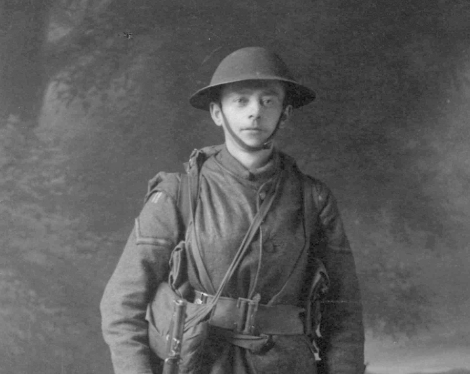So much of what is known about World War I centres on the efforts and experiences of the officers, the men in charge, while those who served under them on the frontline have been comparatively omitted from the history books.
But now, two generations on, the story of one private in The Gordon Highlanders is being brought to the fore thanks to the efforts of his granddaughter and son-in-law.
The book – A Huntly Loon Goes to War – is about Private Charles Leslie Anderson, of the 6th (Banff & Donside) Battalion, The Gordon Highlanders, and his experiences during World War I.
It details his life from a young lad in Huntly, his experiences of fighting at the second battle of Ypres, to surviving the war, and his later life back in the Aberdeenshire town where he ran two shops, and his years on the Town Council of Huntly.
Keith Ferguson, who grew up in Aberdeen, researched and wrote the book, with the help of his daughter Carole.
Sadly he passed away before the book was published, but Carole has taken it forward on his behalf.
In his book, Keith explains that, after telling people that he was writing about his father-in-law Charles, they ask if he was an officer, “particularly famous” or decorated.
His answer: “He was none of these things, but he was one of those stalwart ordinary soldiers on whom any army must depend.”
“I think my dad just felt it was important to tell the story of these chaps,” Keith’s daughter, Carole Allen, added.
“There would have been a lot written maybe about the leaders of the different battalions, but my grandfather was just one of the troop soldiers.
“I think the fact that he did survive it as well is quite important. He went through these horrific things and survived it and you wouldn’t have known, I certainly didn’t knowing him as an older man. He was just very normal and uncomplaining and happy.”
Carole said her father had always been interested in his family history but it was only in his latter years that he decided to write a book about them.
The research journey was particularly interesting for Carole and her father – a journey that led them to uncover lots of things that they didn’t know about their heroic relative.
“It was a lovely experience. When you see the pictures of him as a young man in his kilt and then in his battle dress, it’s really amazing. My grandfather passed away when I was in my early teens.
“My two brothers and I knew him well. I wish in a way though I had been older and able to talk to him more about it, but he didn’t talk about his experiences in the war much anyway.
“He was a lovely chap. We just saw him as a kindly, wise old man. And he was great. He moved down to Fife with my grandmother once he’d retired and to be nearer to us.
“But he was still really active, still walking everywhere. He was very fit up to when he died at the age of 81, despite having bullets in his legs.”
While her grandfather may never have spoken about his injuries, he did mention some anecdotes from his time in the Gordon Highlanders.
One such anecdote mentioned in the book speaks about how Charles would iron his kilt and hear “the lice cracking inside the pleats”.
“Another time, he spoke about the fact that he had met up after the war with a friend who he joined up with but lost track of during the war,” said Carole.
The story is a heartwarming tale which saw both men thinking the other had died, only to discover at the end of the war that both had survived.
What makes the book quite special is that it is as much the story of The Gordon Highlanders as it is of Charles Leslie Anderson. Carole said she hoped others reading it who are in a similar position will be inspired to research their own family tree.
As for the man himself, what would he think about the fact that he was now the subject of a book?
“I think knowing my grandfather, he would have been very pleased and delighted, but he was a modest and shy man,” she said. “I think he would have said ‘what’s all this fuss about?’ but I think he would have been secretly pleased, very pleased.”
A Huntly Loon Goes To War is
available from the Gordon
Highlanders Museum and the
bookshop in Huntly, priced £4.95.
You can contact Carole Allen at carole.allen5@gmail.com
